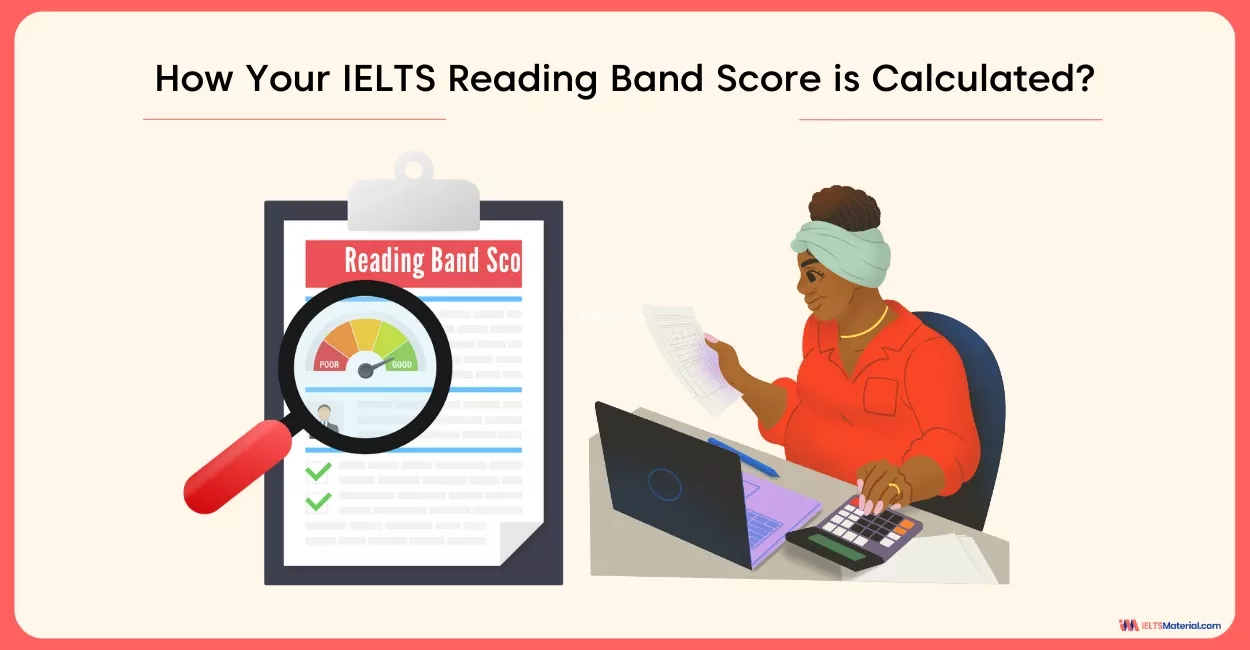Less Television, Less Violence and Aggression - IELTS Reading Answersision, Less Violence and Aggression Reading Answers
11 min read
Updated On
-
Copy link
Finding it difficult to manage time in the IELTS Reading section? Practice solving the questions in the passage, ‘Less Television, Less Violence and Aggression’, by putting the timer on and diving into the answers to work towards getting a band 8+.
Table of Contents
- Types of Questions in IELTS Reading Passage ‘Less Television, Less Violence and Aggression’
- How to Manage Time for the Passage on 'Less Television, Less Violence and Aggression’?
- IELTS Reading Passage on ‘Less Television, Less Violence and Aggression’
- Answers with Explanation on IELTS Passage ‘Less Television, Less Violence and Aggression’

Limited-Time Offer : Access a FREE 10-Day IELTS Study Plan!
The Academic passage ‘Less Television, Less Violence and Aggression’ is a reading passage that appeared in an IELTS Test. Ideally, you should not spend more than 20 minutes on a passage. Mastering question types develops skills such as time management, keyword scanning, and analysis, leading to Band 8+in the IELTS Reading Section. With regular practice, you will find yourself reading faster, analyzing ideas in a deeper way, and feeling more confident with question answers.
Let’s check out the tips and question types below!
Connect with our band 9 IELTS Trainers to crack your IELTS Reading in no time! Book a FREE Demo.
Types of Questions in IELTS Reading Passage ‘Less Television, Less Violence and Aggression’
Once you become aware of the question types, these will help you strengthen your concentration in reading the passage with better attention and purpose. At the same time, it will help you in developing critical thinking skills, which will make you analyze better and interpret the text with ease. Therefore, to develop your reading skills, let’s look at the questions which you need to attempt in the passage, ‘Less Television, Less Violence and Aggression’.
- IELTS Reading Summary Completion[Q.1 - Q.7]
- IELTS Reading True False Not Given [Q.8 - Q.11]
- IELTS Reading Multiple Choice Questions [Q.12 - Q.13]
How to Manage Time for the Passage on 'Less Television, Less Violence and Aggression’?
Time Management for IELTS Reading is important when you need to attempt an extremely detailed and lengthy passage like ‘Less Television, Less Violence and Aggression’. This is why you must have a plan to manage your time carefully and follow a structured approach. The table below shows step-by-step strategies which can guide you in answering all the questions on time.
|
Step |
Time |
Strategy |
|
Step 1 |
2-3 mins |
|
|
Step 2 |
2 mins |
|
|
Step 3 |
4-5 mins |
|
|
Step 4 |
3-4 mins |
|
|
Step 5 |
5-6 mins |
|
|
Step 6 |
1-2 mins |
|
Curious to learn how to improve your reading skills to get a band 9? Check out the video below!
IELTS Reading Passage on ‘Less Television, Less Violence and Aggression’
You should spend about 20 minutes on Questions 1-13, which are based on the Reading Passage below.
Less Television, Less Violence and Aggression
A Cutting back on television, videos, and video games reduces acts of aggression among schoolchildren, according to a study by Dr. Thomas Robinson and others from the Stanford University School of Medicine. The study, published in the January 2001 issue of the Archives of Pediatric and Adolescent Medicine, found that third- and fourth-grade students who took part in a curriculum to reduce their TV, video, and video game use engaged in fewer acts of verbal and physical aggression than their peers. The study took place in two similar San Jose, California, elementary schools. Students in one school underwent an 18-lesson, 6-month program designed to limit their media usage, while the others did not. Both groups of students had similar reports of aggressive behavior at the beginning of the study. After the six-month program, however, the two groups had very real differences. The students who cut back on their TV time engaged in six fewer acts of verbal aggression per hour and rated 2.4 percent fewer of their classmates as aggressive after the program.
B Although many studies have shown that children who watch a lot of TV are more likely to act violently, this report further verifies that television, videos, and video games actually cause the violent behavior, and it is among the first to evaluate a solution to the problem. Teachers at the intervention school included the program in their existing curriculum. Early lessons encouraged students to keep track of and report on the time they spent watching TV or videos, or playing video games, to motivate them to limit those activities on their own. The initial lessons were followed by TV-Turnoff, an organization that encourages less TV viewing. For ten days, students were challenged to go without television, videos, or video games. After that, teachers encouraged the students to stay within a media allowance of seven hours per week. Almost all students participated in the Turnoff, and most stayed under their budget for the following weeks. Additional lessons encouraged children to use their time more selectively, and many of the final lessons had students themselves advocate reducing screen activities.
C This study is by no means the first to find a link between television and violence. Virtually all of 3,500 research studies on the subject in the past 40 years have shown the same relationship, according to the American Academy of Pediatrics. Among the most noteworthy studies is Dr. Leonard D. Eron’s, which found that exposure to television violence in childhood is the strongest predictor of aggressive behavior later in life—stronger even than violent behavior as children. The more violent television the subjects watched at age eight, the more serious was their aggressive behavior even 22 years later. Another study by Dr. Brandon S. Centerwall found that murder rates climbed after the introduction of television. In the United States and Canada, murder rates doubled 10 to 15 years after the introduction of television, after the first TV generation grew up.
D Centerwall tested this pattern in South Africa, where television broadcasts were banned until 1975. Murder rates in South Africa remained relatively steady from the mid-1940s through the mid-1970s. By 1987, however, the murder rate had increased 130 percent from its 1974 level. The murder rates in the United States and Canada had leveled off in the meantime. Centerwall's study implies that the medium of television, not just the content, promotes violence and the current study by Dr. Robinson supports that conclusion. The Turnoff did not specifically target violent television, nor did the following allowance period. Reducing television in general reduces aggressive behavior. Even television that is not “violent” is more violent than real life and may lead viewers to believe that violence is funny, inconsequential, and a viable solution to problems. Also, watching television of any content robs us of the time to interact with real people. Watching too much TV may inhibit the skills and patience we need to get along with others without resorting to aggression. TV, as a medium, promotes aggression and violence. The best solution is to turn it off.
Questions 1-7
Complete the summary using words from the box below. Write no more than THREE WORDS AND/OR A NUMBER.
A study that was published in January 2001 found that when children 1 _____________________ less, they behaved less 2 _____________________ . Students in a California elementary school participated in the study, which lasted 3 _____________________ . By the end of the study, the children’s behavior had changed. For example, the children’s 4 _____________________ reported that the children were acting less violently than before. During the study, the children kept a record of the 5 _____________________ they watched TV. Then, for ten days, they 6 _____________________ . Near the end of the study, the students began to suggest watching 7 _____________________ .
Questions 8-11
Do the following statements agree with the information given in the Reading Passage?
In boxes 8-11 on your answer sheet, write
TRUE if the statement agrees with the information
FALSE if the statement contradicts the information
NOT GIVEN if there is no information on this in the passage
8. Only one study has found a connection between TV and violent behaviour.
9. There were more murders in Canada after people began watching TV.
10. The United States has more violence on TV than other countries.
11. TV was introduced in South Africa in the 1940s.
Questions 12 - 13
For each question, choose the correct letter A-D and write it in boxes 12 and 13 on your Answer Sheet.
12. According to the passage,
- only children are affected by violence on TV.
- only violent TV programs cause violent behavior.
- children who watch too much TV get poor grades in school.
- watching a lot of TV may prevent us from learning important social skills.
13. The authors of this passage believe that
- some violent TV programs are funny.
- the best plan is to stop watching TV completely.
- it’s better to watch TV with other people than on your own.
- seven hours a week of TV watching is acceptable.
Grab the IELTS Reading (Academic) Test Guide: Essential Tips, Strategies, and Practice Tests” (April-June 2025) today!
Answers with Explanation on IELTS Passage ‘Less Television, Less Violence and Aggression’
Check out answers with their explanations for the passage 'Less Television, Less Violence and Aggression’. Remember to note the areas where improvement needs to be worked on so that you can work on those areas before attempting questions from similar passages. With this technique, you can prepare yourself to attain a higher IELTS Band Score.
Unlock Answers
| Question Number | Answer | Explanation |
| 14 | Watched TV | Paragraph 1 mentions that the ‘study, published in the January 2001 issue’ of the Archives of Pediatric and Adolescent Medicine, found that ‘third- and fourth-grade students’ who took part in a curriculum to ‘reduce their TV, video, and video game use’ engaged in fewer acts of verbal and physical aggression than their peers. The students who cut back on ‘their TV time’ (watched TV) engaged in six fewer acts of verbal aggression per hour. Hence, the answer is ‘Watched TV’. |
| 15 | violently | Paragraph 1 informs that the ‘study, published in the January 2001 issue’ of the Archives of Pediatric and Adolescent Medicine, found that ‘third- and fourth-grade students’ who took part in a curriculum to reduce their TV, video, and video game use engaged in ‘fewer acts of verbal and physical aggression’ (acted less violently) than their peers. Hence, the answer is ‘violently’. |
| 16 | Six months | Paragraph 1 points out that the study, published in the January 2001 issue of the Archives of Pediatric and Adolescent Medicine, took place in two similar San Jose, ‘California, elementary schools’. Students in one school ‘underwent an 18-lesson, 6-month program’ designed to limit their media usage, while the others did not. After the ‘six-month program’, however, the two groups had very real differences. Hence, the answer is ‘6 months’. |
| 17 | parents | Paragraph 2 specifies that physical acts of violence, ‘parental reports’ (children’s parents reported) of aggressive behavior, and perceptions of a mean and scary world also decreased (children’s behavior had changed to less violent than before the study). Hence, the answer is ‘parents’. |
| 18 | Number of hours | Paragraph 3 suggests that early lessons encouraged ‘students’ to ‘keep track of and report’ on ‘the time they spent watching TV’ (number of hours they spent on watching TV) or videos or playing Video games, to motivate them to limit those activities on their own. Hence, the answer is ‘Number of hours’. |
| 19 | Avoided TV | Paragraph 3 reveals that the initial lessons were followed by TV-Turnoff, an organization that encourages less TV viewing. ‘For ten days’, ‘students’ were challenged to ‘go without television’ (did not watch or avoided TV), videos, or video games. Hence, the answer is ‘Avoided TV’. |
| 20 | Less TV | Paragraph 3 tells that additional lessons encouraged children to use their time more selectively, and many of the ‘final lessons’ (end of the study) had ‘students themselves advocate reducing screen activities’ (students began to suggest watching less TV). Hence, the answer is ‘LessTV’. |
| 21 | FALSE | The first sentence of paragraph 3 brings out the fact that although ‘many studies have shown that children who watch a lot of tvs are more likely to act violently’, this report further verifies that television, videos, and video games actually cause violent behavior, and it is among the first to evaluate a solution to the problem. Hence, the answer is ‘False’ as the statement contradicts the passage. |
| 22 | TRUE | At the end of paragraph 4, the author notes that a study by Dr. Brandon S. Centerwall found that ‘murder rates climb after the introduction of television’. In the United States and ‘Canada’, ‘murder rates doubled 10 to 15 years after the introduction of television’ (more murders after people began watching TV). Hence, the answer is True as the statement is true according to the passage. |
| 23 | NOT GIVEN | The last line of paragraph 4 mentions that in the United States and Canada, murder rates doubled 10 to 15 years after the introduction of television. In the fifth paragraph, it is further added that the murder rates in the United States and Canada had levelled off in the meantime. As the author has said nothing about the United States having more violence on TV than other countries, the answer is NOT GIVEN. |
| 24 | NOT GIVEN | In the fifth paragraph, it is given that Centerwall tested the TV- violence pattern in South Africa, where television broadcasts were banned until 1975. Murder rates in South Africa remained relatively steady from the mid-1940s through the mid- 1970s. As there is no mention of when the TV was introduced in South Africa, the answer is NOT GIVEN. |
| 25 | D | Paragraph 5 discusses that ‘watching television’ of any content ‘robs us’ (keeps us from) of the time to ‘interact with real people’. Watching too much TV may inhibit the ‘skills and patience’ (important social skills) we need to get along with others without resorting to aggression.
Hence, the answer is ‘D’ (watching a lot of TV may keep us from learning important social skills). |
| 26 | B | In the last two sentences of paragraph 5, the author concludes that ‘TV, as a medium, promotes aggression and violence’. The ‘best solution is to turn it off’ (stop watching TV completely). Hence, the answer is ‘B’ (the best plan is to stop watching TV completely). |
Enroll into our Free IELTS Webinar and learn more about techniques to improve your reading speed.
Well done! You must go through passages like 'Less Television, Less Violence and Aggression’, you will be able to master the IELTS Reading module. However, you must keep track of the level of your progress so that you put in extra effort to achieve a band score of 8+. So, do not just stop here and continue the practice with more passages.
Check More IELTS Reading Answers
Also Check:
Practice IELTS Reading based on question types

Start Preparing for IELTS: Get Your 10-Day Study Plan Today!
Explore other Reading Practice Tests

Kasturika Samanta

Kasturika Samanta

Nehasri Ravishenbagam
Recent Articles

Nehasri Ravishenbagam

Haniya Yashfeen

Haniya Yashfeen

Haniya Yashfeen





Post your Comments